LA students to City Council: Fix our schools, neighborhoods
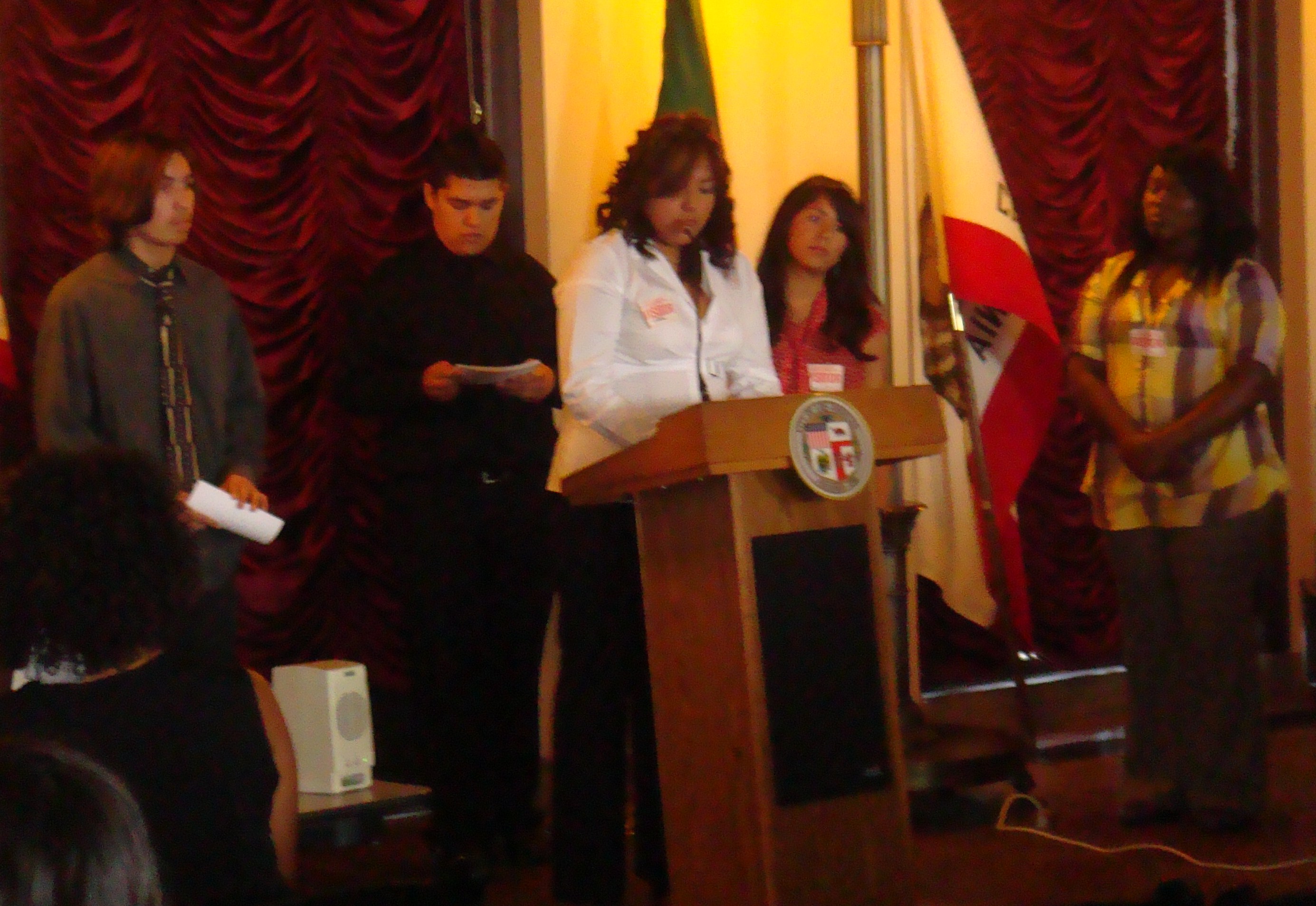
The presentations from students from several high schools across greater Los Angeles was the culmination of a weeks-long summer research program during which the students studied ways the economic crisis has affected their communities. In South Los Angeles, students reported on the impact of poverty.
From East Los Angeles, students discovered the economic crisis had helped boost the high school drop out rate. The high school students, presenting their findings to the Los Angeles City Council and other city officials, were sponsored by UCLA’s Institute for Democracy, Education and Access.
Ernest Morrell, associate director of the Institute for Democracy, Education and Access, said the seminar aimed to promote conversations about educational reform and youth development. “The presentation is a validation for them that what they do matters,” he said.
Activist youth with a message
Ricky Torres, a Crenshaw High School junior who participated in the summer research, was no stranger to speaking out against the recent budget cuts even before joining the seminar. Torres participated some of the walk outs when teachers at Crenshaw High School were given pink slips as LAUSD cut its budget to reflect the recession.
“We were helping out the teachers. We didn’t want the best teachers to leave,” said Torres.
At the presentations at City Hall earlier this month, each group of students prepared a PowerPoint presentation that included information about the different issues they studied, an overview of the community they studied, the research, their findings and recommendations for change. Each group also presented a video documentary.
The East Los Angeles group found that more than half of the students they surveyed have considered dropping out of school to get jobs because of the economy. More than 70 percent of the people had concerns about health care and losing their homes. And more than half said they believed students are no longer a priority to public officials.
The students who went into the San Fernando Valley and West Los Angeles said they didn’t expect to find many similarities, but were surprised to see how these communities were also affect by the economic crisis.
The South Los Angeles group gave a brief history of the social oppression that has plagued this community. They talked about the rise of drugs and violence in the 1980s, the riots, and the high poverty rate.
“When we wake up in the morning, we have a higher access to death than any other community,” said Torres, who lives South Los Angeles.” I feel fear every single day. In other communities you see people outside having fun . . . you don’t see that in South Central.”
Youth and their “rhetorical power”
The South Los Angeles group concluded that a lack of resources in this community is to blame for the low graduation rates at Manual Arts and Crenshaw high schools. They suggested that the Los Angeles Unified School district create a research team to serve students in this community.
“Don’t believe the lies,” Jimenez, a senior at Wilson High School, told the audience. “You have the power to change these oppressive conditions.”
After each group of students finished their presentation, there was a sense of relief and pride on their faces.
When asked whether he felt the last 10 summers of co-directing this seminar was helping change Los Angeles, UCLA’s Morrell paused and said: “We have impacted leaders who have a different kind of respect or fear of the kids around the city. Kids have a rhetorical power and honesty and legitimacy and a moral authority to do things that adults can’t. I do think these kids have a made a difference in their families, in their schools, to their teachers and a difference to the city’s school system.”
The UCLA institute is a network of UCLA scholars and students, professionals in schools and public agencies, advocates, community activists, and urban youth. IDEA’s mission is to make high quality public schooling and successful college participation routine occurrence in low income neighborhoods of color. More information about the institute and its work is available here.
Improved college prep curriculum could send more South LA students to college
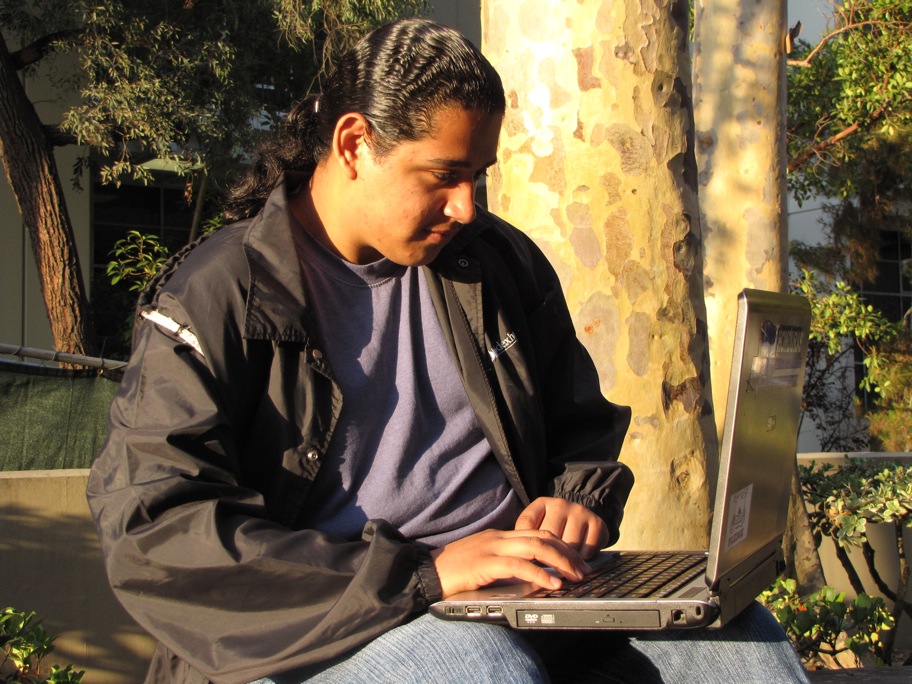
LOS ANGELES — As high school graduates across the country pack their bags this month for their first year of college, a South Los Angeles advocacy group hopes more youth from the area’s high schools will eventually be able to do the same.
Community Coalition, a South Los Angeles-based advocacy group, helped prepare requirements for mandatory college-prep curriculum designed to send more students of color to colleges and universities; the proposals, adopted by the Los Angeles Unified School Board, went into effect for the first time in the 2008-2009 school year. In addition to the Community Coalition, the South Central Youth Empowered Through Action, the Coalition’s youth branch, also helped prepare the college-prep course recommendations.
Now beginning its second year, the enhanced curriculum featuring more academic courses is reviewed in a study by the Annenberg Institute for School Reform at Brown University. The institute says in its review that the program has expanded on large-scale college preparation opportunities for students who attend South LA schools. But the program is still too new to gauge its success in more definitive ways.
The new curriculum targets all Los Angeles high schools, but it was initially conceived for students attending public high schools in South Los Angeles, where a dearth of college-prep courses has long been a problem. At Fremont High School, for example, there were nine cosmetology classes but only four chemistry classes, the Annenberg study reported.
“This is one of the most significant reforms this district is embarking on in the last twenty years,” Jose Huizar, a Los Angeles city councilman and a former LAUSD school board president, told the Annenberg Institute. “What this is about is providing thousands of students an opportunity to attend college, an opportunity denied to them with the (previous) policies and practices.”
The report acknowledges the impact of the current recession on school improvements, and LAUSD officials announced last week that higher school taxes will be levied on property owners to shore up the school district’s budget and to help bank roll the district’s massive school construction program.
A pathway to college
Like other school systems across the country, including Philadelphia and Chicago, LAUSD has launched a variety of efforts to improve its graduation rate – now at 63 percent — particularly for African American and Latino students, which tends to run lower. Like LAUSD, school systems have increasingly relied on the assistance from community-based organizations to help them build stronger and meaningful pathways to college for students. The Community Coalition, founded by Karen Bass, now the speaker of California, in 1990 to combat the drug epidemic in South Los Angeles, enlisted hundreds of parents and students to press for equity in curriculum offerings at South LA schools.
For the past six years, Community Coalition has been among those organizations advocating for the same course offerings in South LA high schools as those found in schools where white students represent the majority of the enrollment.
Under LAUSD’s year old effort to improve college-rep training for students in Los Angeles, all high school students are expected to complete a college preparatory curriculum in order to graduate. These requirements include two years of social sciences, four of English, two of science, two of a foreign language, one of the arts, one elective, algebras I and II and geometry. The requirements are known as the A-G curriculum, a prescribed set of high school courses for admission to the University of California and California State University systems. In injecting more rigor in urban high schools, LAUSD and Community Coalition hope to be able to tell more stories like that of Luis Lopez, who is a first generation college student.
First generation students
“I didn’t even know what college was until later in high school,” said Lopez, 19, who graduated from Washington Prep High School in 2008 and now begins his second year at UCLA, where he is conducting research on South L.A. youth as part of his academic studies.
Since neither of Lopez’s parents attended college, he never thought it was an option until a college counselor who noticed Lopez’s good grades approached him. “My senior year was my first time talking to the college counselor,” Lopez said. “Supposedly college reps would always call the school for me because I was the valedictorian.”
Lopez added that he was also unaware of who a valedictorian was until the counselor further explained. Once Lopez was awarded a scholarship to attend UCLA, he was eager to transition into the college curriculum, oblivious to the difficulties ahead.
“It was an emotional breakdown,” he said. “Everybody would show me how many APs they passed and I barely passed one…they were using vocabulary I would never hear in my life.”
That first year at UCLA was Lopez’s first time getting a C or B in a class. He normally excelled in math and science, but those were the main classes in which he performed poorly. Lopez shook his head in dismay when he explained that he was not fully prepared for college.
“At first I felt like, ‘why am I not good enough?’” Lopez said. “Then I referred to what I had learned in high school and realized there was another side missing.”
Improving teaching in South LA schools
Lopez added that his college experience has shown him why stronger curriculum, more qualified teachers and more challenging textbooks are needed in South Los Angeles high schools. “We might get the McGraw-Hill instead of the Princeton,” he said of different versions of textbooks. “Some teachers never encourage us; they don’t believe in us… and if you compare Beverly Hills High to Fremont, one looks like a prison and the other looks like a university.”
When the Community Coalition’s academic reform plan was approved, critics called it overly ambitious. But the coalition is now waiting for subsequent years’ high school graduation rates to track the program’s success, and in the meantime, Lopez said he will continue analyzing the impact of the curriculum as part of his research at UCLA.
The complete Annenberg Institute study, conducted over six years and highlighting community organizations’ impact on school reform, is available here.
Exploring a community’s needs, students vow to “change this place”
LOS ANGELES – When Isaac Jimenez, a Wilson High School senior, finished the school year last May, he could have chosen to enjoy his summer break. But instead he opted to spend five weeks learning about and doing research in the communities of Greater Los Angeles.
Jimenez is one of 25 high school students from Los Angeles Unified School District hired to participate in a youth research seminar sponsored by the UCLA Institute for Democracy, Education and Access, an institute that brings together scholars and community representatives to improve the number of students of color in colleges and universities. The seminar teaches students college-level research to motivate them to address social issues in their communities.
“Young people need to be major players in conversations about educational reform,” said Ernest Morrell, the institute’s associate director.
Morrell has been involved with the project since it was established in 1999 as a way to determine why there was such a high academic failure among students of color. Over the years the project has grown and explored several research topics.
This is Jimenez’s second year in the program. He was first recommended by his history teacher and said he was drawn to return to the program because of this year’s topic: the affect of the economic recession on a student’s ability to get an education.
Running out of paper
Jimenez said he felt the affect of the economic crisis when his school ran out of paper with only a few weeks left of the school year. “If you wanted to make copies or print something out you had to take your own paper and they still charged you for the ink,” he explained.
Jimenez, who lives in East Los Angeles, said he’s eager to learn how the economy has impacted other communities. “I wouldn’t know if the same affects take place . . . it [the research] will teach me if we have all had the same affect from the economic crisis.”
Jimenez is part of a group of five students who will conduct their research in South Los Angeles.
 The students will spend one week becoming familiar with university-level work, learning theories they will talk about and putting together their research design. The last four weeks are spent conducting their research and analyzing their data.
The students will spend one week becoming familiar with university-level work, learning theories they will talk about and putting together their research design. The last four weeks are spent conducting their research and analyzing their data.
Each group, consisting of five students from different schools, will explore a community in Los Angeles. They will visit schools, organizations, and public spaces in their designated community and collect their data through surveys and interviews.
With the support of five teachers from Los Angeles city schools and UCLA graduate students, the students will look at the communities of South, East and West Los Angeles, Watts and the San Fernando Valley.
“Every teacher has this dream of having 30 students in a space that’s not school,” said Morrell of the seminar location, “in a highly resourced space because most of us feel like the reason students aren’t learning has a lot to do with what schools are as institutions and a lack of resources. If you have the space and the resources, kids can do amazing things.”
Inspired to change “this place”
The seminar is funded by a collection of grants that help provide students with the materials for their data collection.
Aaron Armstrong, a senior at Manual Arts High School, participated in the seminar last summer and took what he learned to begin a program at his school to develop a better connection between students, teachers and administrators.
Armstrong said his experience made him more willing to listen and work with others to become active in their communities. “It showed me that there’s more out there than just me and my little bubble because at first I never liked going anywhere outside of this area [South Los Angeles],” he said.
Locke High School senior, Gregorio Arenas, said curiosity is what attracted him to join the seminar. “I didn’t know anything about my community. At first I didn’t care because I felt like my educators didn’t care for me so I stopped caring about my own community.” he said. Arenas said he was angry with the fact that a lack of resources in his school caused him to get lower grades because he wasn’t able to buy materials for projects that the school should provide.
Now that he is in the program, Arenas said he has a different perspective.“Seeing the community around me and seeing how we’re treated, it makes me want to change this place.”
The seminar concluded on Aug.7 with a presentation of the student’s findings to parents, teachers and city officials at Los Angeles City Hall.
OPINION: Why youth don’t take their education seriously
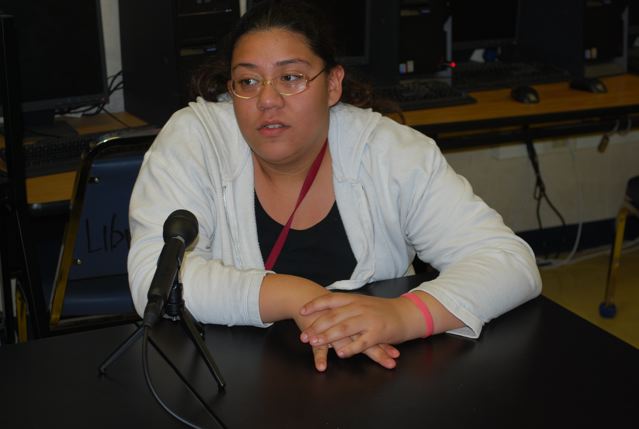
This commentary was produced by Yesenia Zamarripas in the Computer Visual Handling class taught by Apple Distinguished Educator Daphne Bradford at Crenshaw High School.
Free health care clinic draws thousands of South LA Residents
INGLEWOOD – “Tetanus shot! Get your tetanus shot!”
A baby wailed as a woman in khaki shorts and a t-shirt with large blue letters on the back reading “VOLUNTEER” shuffled by. She had a needle in hand, prepped to administer the booster shot to any willing patient.
“Every 10 years, everyone needs one,” she continued to yell.
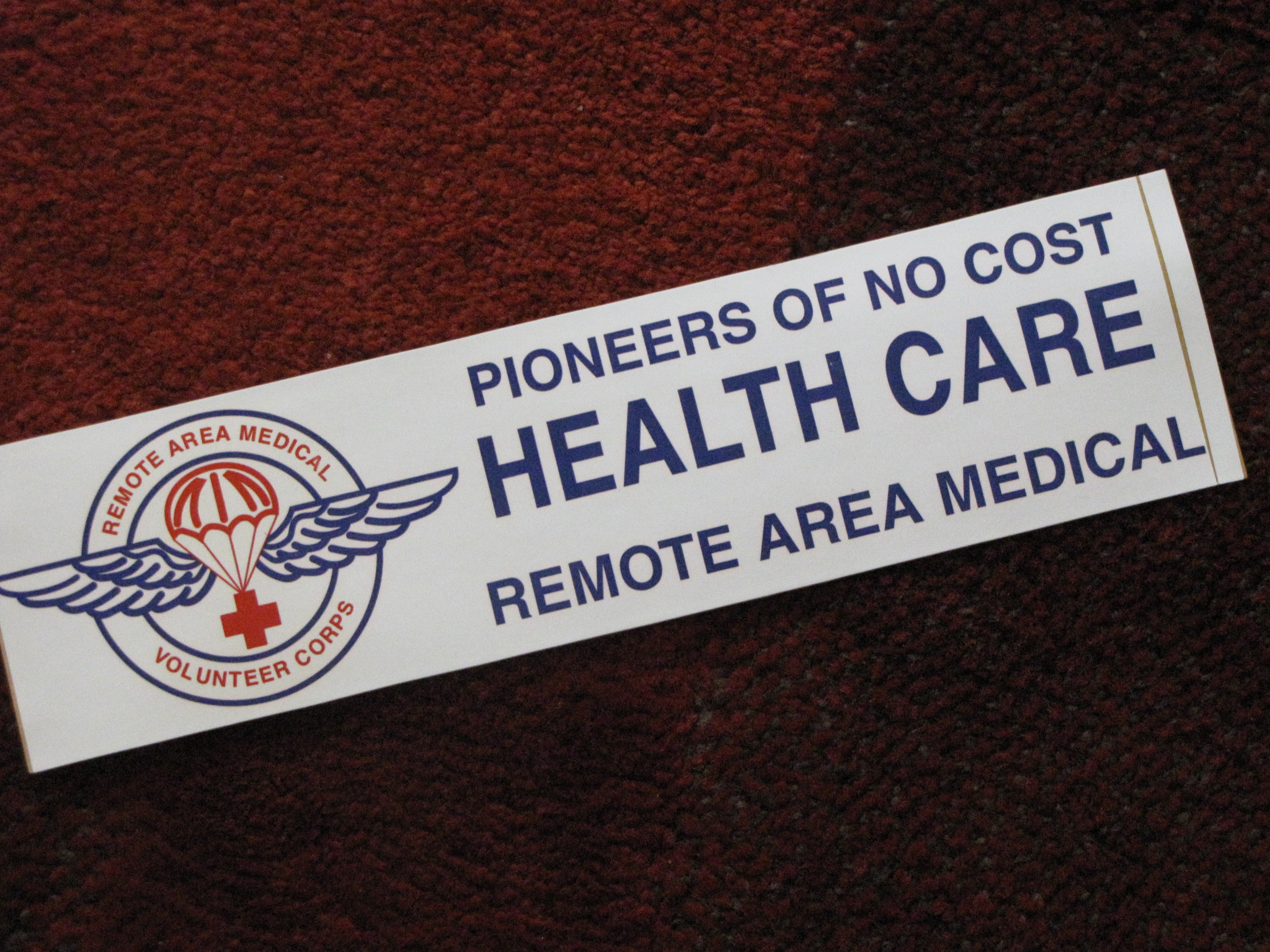
But in a sign of the times, thousands lined up beginning at 3 a.m. last week on the first day of the eight-day clinic that runs from Aug. 11 through Aug. 18. Those who came to the Forum sought treatment for a variety of neglected health issues, even as President Obama and Congress wrestled with universal health care legislation that might one day render the Inglewood scene obsolete. Until that day arrives, however, free health clinics like this seem likely to draw thousands who are uninsured or underinsured.
A pair of new glasses
After seeing a flyer for the free clinic at church, Lauren Halsey, 22, arrived at The Forum as soon as the parking lot opened at 3 o’clock Wednesday morning to be one of the first in line when the clinic opened at 5:30 a.m. She wasn’t the only one. “It was gross how we were all outside waiting in this long line with our tickets to come in,” Halsey said. “It wasn’t for a concert or a game. We were all here because we need care.”
After finally entering the Forum, the one-time home of the Los Angeles Lakers, and making her way to a dentist chair, Halsey was surprised that her checkup resulted in getting a tooth pulled. “I hadn’t been to the doctor in a long time, so I had no idea I needed my tooth pulled,” she said between grimaces of pain. “I guess I had a baby tooth piece still stuck or something.”
John Thomas, 49, also spent his morning at the clinic. He said he has been in need of glasses ever since he could no longer pass the vision test to continue his career as a truck driver. “Right now, I don’t have an income to buy any glasses on my own and I don’t have insurance,” he said.
Many of those who attended the free clinic, including Halsey and Thomas, are uninsured. Many others have health insurance, but still cannot afford the costs of medical services.
The vast majority of patients needed either dental or vision services, said Pamela Hearn, executive director of Catholic Healthcare West, which provided RAM with supplies and vendors for the event,
“A lot of people here may have insurance but not dental or vision,” she said.
Since last month, California stopped including dental and vision coverage under MediCal. The state also capped enrollment in its health insurance program for children in under the age of 19 in low-income working families. Extending affordable health-care coverage to the uninsured or under-insured is one of the underpinnings of President Obama’s campaign for health-care reform.
Picking and choosing the ailment to treat
“While reform is obviously essential for the 46 million Americans who don’t have health insurance, it will also provide more stability and security to the hundreds of millions who do,” the President said in his weekly address on August 8.
Obama used last week to tour the country in a series of public meetings to further explain his health care reform plan. The president’s critics have called the reform “socialized medicine,” arguing that this recession is not the time to charge already-burdened taxpayers with yet more taxes.
“Yea, well those people don’t experience this, they never will and never have,” Halsey said while sitting in the bleachers of the Forum, overlooking the crowds of people below getting immunization shots, teeth checked or blood pressure taken. She continued to argue that investing in universal health care, despite the current state of the economy, is an investment in humanity.
Nineteen-year-old Monica Gonzalez, a dental assistant volunteering at the clinic, didn’t express any type of support for or opposition against the proposed health care reform packages. She only said that some type of care has to be available to the uninsured.
“People who don’t have coverage, they have to go with what they need the most,” Gonzalez said. “If they have a medical problem, they have to pick and choose what they want to pay for.”
Inside Homeboy Industries, former gang members find acceptance and hope
OPINION: For Black Americans, perception trumps reality every time
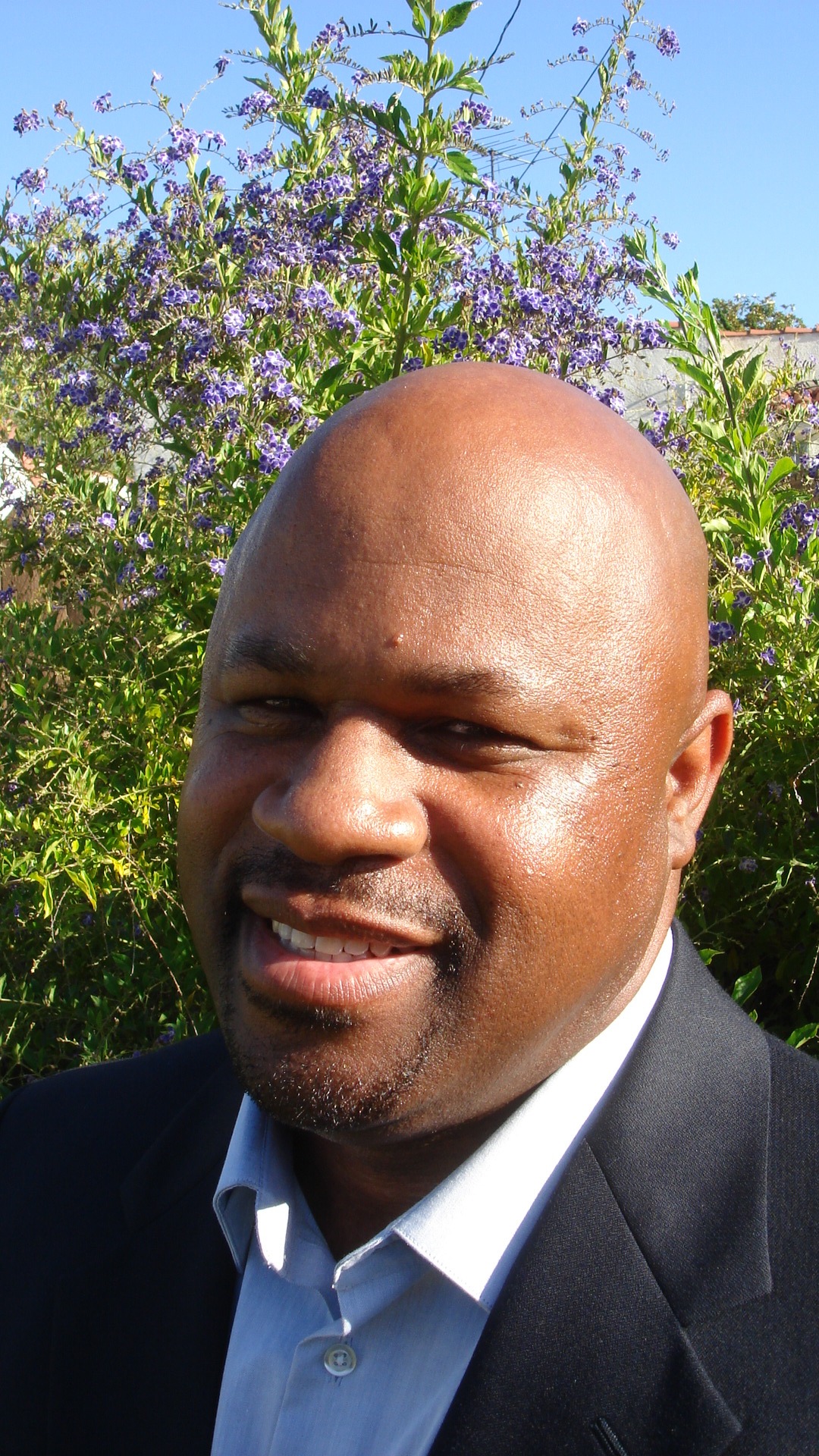 While waiting for a light to change one day I looked to my left and noticed a relatively large group of African-American male youths. They all appeared to be of high school age and, after looking further west, I noticed the high school that they probably attended. There didn’t appear to be a bus stop where they were standing, orI didn’t notice one. So, it struck me as kind of odd that a group of that size would be idly standing in that area.
While waiting for a light to change one day I looked to my left and noticed a relatively large group of African-American male youths. They all appeared to be of high school age and, after looking further west, I noticed the high school that they probably attended. There didn’t appear to be a bus stop where they were standing, orI didn’t notice one. So, it struck me as kind of odd that a group of that size would be idly standing in that area.
The traffic was heavy and the light was very long, so I assumed school must have ended. To occupy my time I began to look more closely at the young men and noticed that they were all dressed in the typical oversized clothing that appears to be the fashion these days among inner-city youth. Pants so big that they could fit Shaquille O’Neal. Pants sagging so low that their waists appeared to be slightly above their ankles. Shirts as long as Yao Ming. The only thing that appeared to fit properly were their shoes and I’m sure that as soon as they learned to balance themselves in a pair of 20 EEE’s, those will be super-sized as well.
However, what struck me the most was what they were doing. Some of them smoked cigarettes and looked pensive. Some talked to each other or stared into nothingness. Then, I noticed that there were about seven or eight who were walking through the crowd pretending they were on stage. They were rapping and gesturing to themselves and, more strangely, to the many passing motorists. In some cases, the gestures appeared to resemble gang-signing. It looked to me as if they were really trying to draw attention to themselves as a group and as individuals.
As an African-American male, my first instinct was to mentally comment on how ridiculous and unkempt some of them looked. How mob-like and intimidating they must have appeared to the passing motorists. How embarrassed I was for them and because of them. I asked myself , “Is hip-hop and pop culture so desirable that these individuals cannot see what they really look like? Do they really think that they are looking cool and desirable?
Invisible Men
As if the changing of the traffic signal triggered the answer in my spirit, I remembered the title of a 1952 novel by an African-American author by the name of Ralph Ellison. The name of the book was “Invisible Man.” It was about a southern African-American man who, through his education, travels, and experiences in the south and north, came to realize that he was “an invisible man.” That since he was denied so many of his most basic rights that his individuality, his very essence and being, really didn’t matter in this society.
Applying this concept to the restless group of young, African-American men, I realized that drawing attention to themselves was precisely what they were trying to do. Screaming out for some type of physical, emotional, or spiritual attention was what they hungered for the most. Much more than that burger at McDonald’s or that Sony Playstation that everyone thinks occupies so much of our time. In fact, isn’t this what hip-hop and rap music represented for African-American youths? A chance to conquer that invisibility? An opportunity for them to verbally and physically express themselves according to how they feel? A shot, without a gun, to tell the world that we have pain, laughter, dreams, fears, insecurities, and desires for a more comfortable and respectable existence—like everyone else?
“No days off”
As a young African-American child living in Newark, N.J., I remember seeing pictures of myself wearing cardigan sweaters and sport coats. I remember how important I felt whenever I was formally dressed. I remember the compliments from my teachers when I would have to give a speech or read something to a class or group– how I had to “look the part” in order to “be the part.” The pride that swelled inside of me whenever I would see those pictures or experience those opportunities had a significant impact on how I would later view myself as an African-American man visible to myself.
Unfortunately, perception, not reality, still dominates thought and judgment in this society. That old maxim, “You only get one time to make a first impression” still wields a major influence on whether or not you get to pass “GO” and collect $200. Being African-American in this country means that every impression you make, every time you make it, is always going to be viewed as a first impression. There are no days off. Irrespective of the fact that you were introduced to someone yesterday, tomorrow they will have to be reminded of why they talked to you in the first place.
Eugene Mosley, Jr., a graduate of the University of Southern California, is a volunteer with Concerned Black Men of Los Angeles, a nonprofit group that works with youth and schools in South Los Angeles. He lives in Inglewood.














